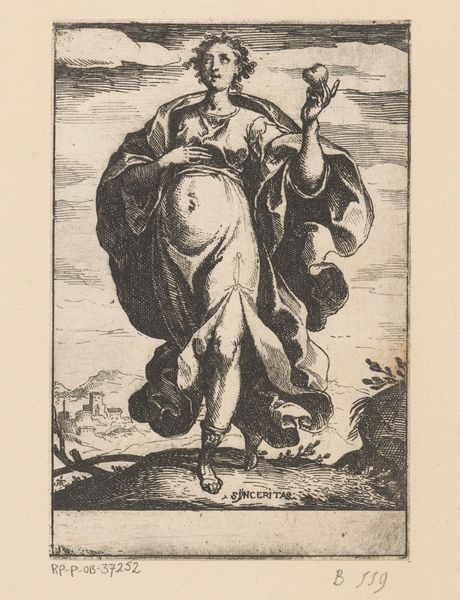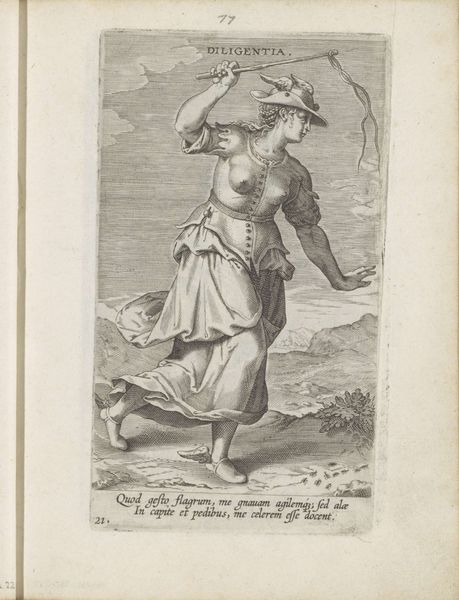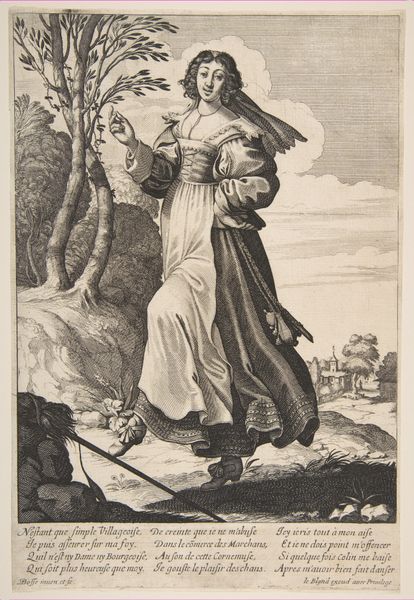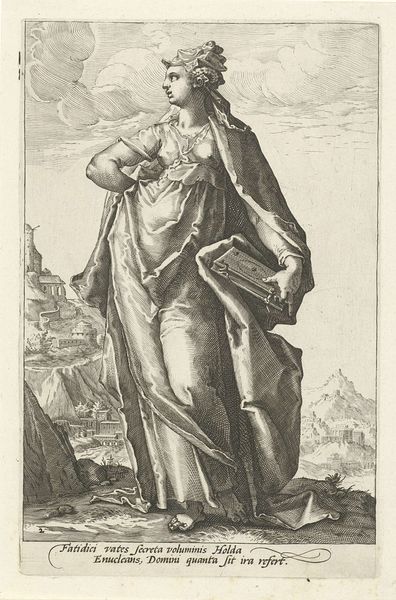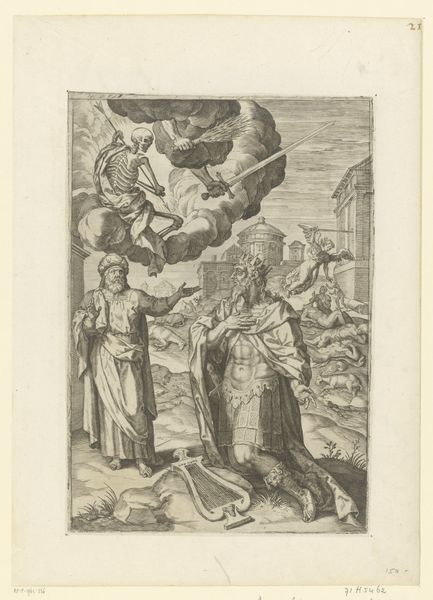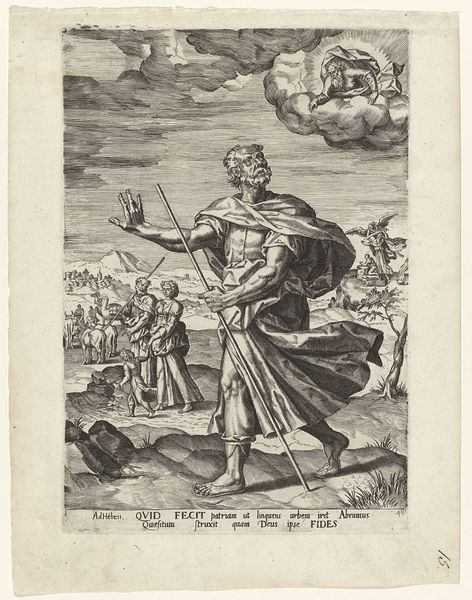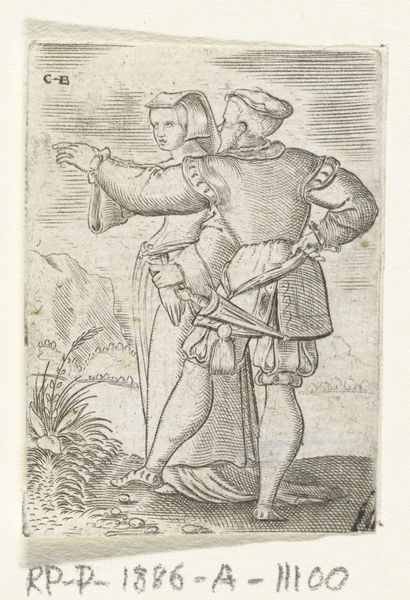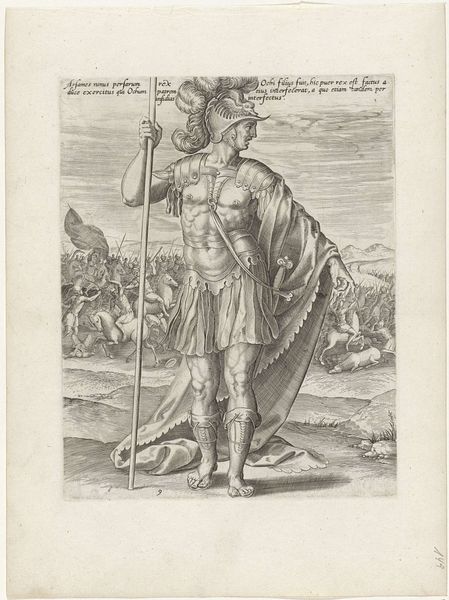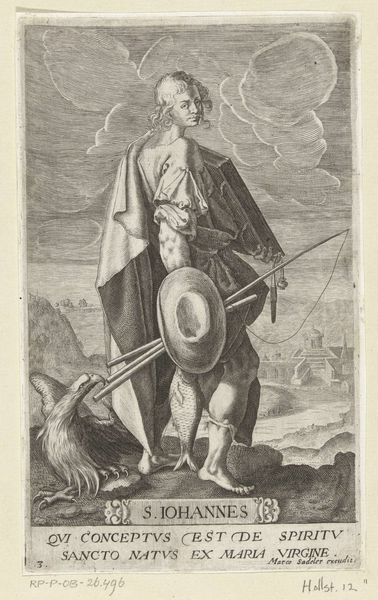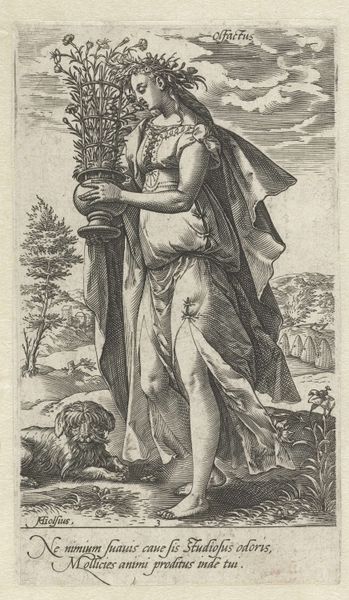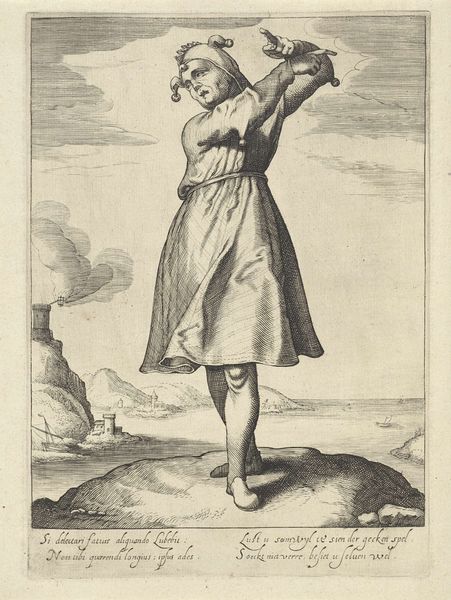
engraving
#
mannerism
#
figuration
#
line
#
history-painting
#
engraving
Dimensions: height 257 mm, width 199 mm
Copyright: Rijks Museum: Open Domain
Editor: This engraving from 1585 depicts Koning Artaxerxes II. It's unsigned, just listed as Anonymous at the Rijksmuseum. The detail is amazing, you can even see an entire battle in the background, yet the whole image has this otherworldly, detached feeling. How do you interpret this work? Curator: Immediately, the image speaks to power, not just in its portrayal of Artaxerxes II, but in its very creation. Who commissions such works, and why? The figure looms large over a field of battle. What are the power dynamics at play between those leading and those led? Consider the colonial gaze inherent in historical depictions of rulers. Are we meant to admire or critique the implied authority? Editor: That's interesting; I hadn't really considered who commissioned the work, or the perspective it might be promoting. So the artist, or whoever paid for this, wanted to showcase power and authority? Curator: Likely. It asks us to consider how power is constructed and disseminated through visual representation. Artaxerxes, through pose and positioning, dominates the chaotic scene behind him. The engraving style, with its precise lines, also signifies control – a desire to categorize and understand the world, characteristic of that era. But at what cost, and whose stories are left untold in this visual narrative of dominance? How can we engage with works like this, recognizing its inherent biases, to foster critical dialogue? Editor: I suppose thinking about those biases and missing voices helps challenge the narrative and give space for a broader understanding. It shifts the focus from just the powerful figure to everyone else involved in that history. Curator: Exactly. These images are not just historical records but powerful agents in shaping our understanding of the past and its impact on the present. Questioning those images disrupts singular narratives of greatness, demanding a more nuanced and inclusive vision of history.
Comments
No comments
Be the first to comment and join the conversation on the ultimate creative platform.
